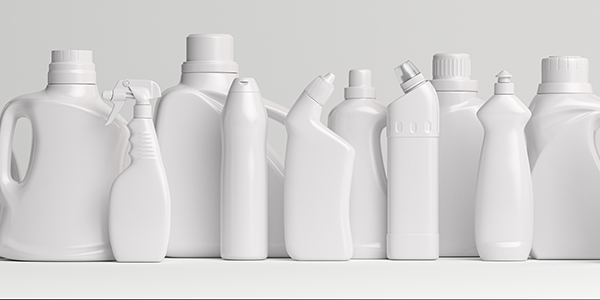
16 Nov Understanding Hazardous Waste Part 3: In Your Home
Reading Time: 2 minutesThe odds are excellent that you have hazardous materials in your home. Everyone does. And it is likely that you never thought much about it. As defined in Part 1 of this series, hazardous substances do not become a hazardous waste until the user/generator declares it to be a waste material. And that is also true in your home.
Chemicals In Your Home
Hazardous chemicals abound. Many common products at home are dangerous, even though they are sold over the counter and most people never think twice when using them. Here are just a few common examples:
- Laundry Bleach (e.g., Clorox, normally a 3% solution of sodium hypochlorite, an oxidizer)
- OxiClean (sodium percarbonate, an oxidizer, plus a weak acid and surfactants)
- WD-40 (50-60% naphtha, xylene, petroleum oils, etc.)
- Drain decloggers (e.g., Drano, mostly Potassium Hydroxide – a powerful caustic)
- Oven cleaners (either sodium hydroxide or potassium hydroxide – a powerful caustic)
- Ammonia (a dilute solution of ammonia, used as a cleaning agent)
- Glass cleaner (ammonia and isopropanol)
- Toilet cleaner (usually bleach plus detergents)
- Nail polish remover (acetone)
- Air fresheners (may contain formaldehyde, petroleum distillates, p- dichlorobenzene, and aerosol propellants)
- Furniture polish (petroleum distillates and a fragrant oil)
- Rug cleaners (perchloroethylene and/or various detergents)
- Hobby paints and glues (often toluene-based)
- Paint, oil-based (mineral spirits)
- Paint, latex-based (latex and binders)
- Lighter fluid (a mixture of petroleum distillates)
- Pesticides (e.g., various chemicals – mostly organic — specially formulated to kill insects, rodents, etc.)
- Herbicides (various organic compounds used to kill unwanted plants)
- Gasoline (benzene, toluene, ethylbenzene, xylene, and methyl tert-butyl ether)
- Mothballs (naphthalene)
- Antifreeze (ethylene glycol)
- Muriatic acid (hydrochloric acid)
- Car batteries (sulfuric acid)
The toxicity of these chemicals varies. Some are lethal if used improperly or ingested. However, most will “only” make you sick or harm you in other ways when used improperly. Moreover, some chemicals, if spilled in sufficient volume, can result in an environmental situation requiring professional intervention. Two of the most common household products, bleach and ammonia, must NEVER be mixed. When mixed, they react instantly, releasing acidic hydrogen chloride gas that can burn your air passages and could kill you.
Despite these unambiguous and imminent hazards, people use these products on a daily basis without fear or hesitation. Yet, ironically, if a user is careless, they potentially face a higher degree of danger than they do from living near a hazardous waste site.
The USEPA has published this helpful guide suitable for individuals of all ages. And, lastly, here’s a useful guide for household chemical emergencies.
Conclusion
Hazardous chemicals (which eventually become hazardous waste) are prevalent in every home. Used carefully and as directed by the manufacturer, they improve the quality of our lives and allow us the modern-day conveniences to which we have become accustomed. If you have questions about this or any other environmental topic, Ask ESA.



